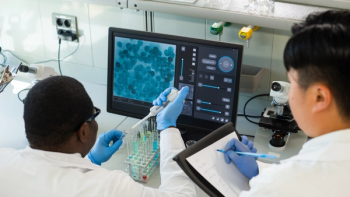
- Pharmaceutical Executive-01-01-2022
- Volume 42
- Issue 1
Pharma’s Psychedelic Experience
Growing evidence supports psychoactive substances can successfully treat mental issues.
You’re not hallucinating—pharma’s push to use psychedelics to treat a number of medical conditions is real. Substances such as ketamine, MDMA (ecstasy/molly), psilocybins (magic mushrooms), DMT, and LSD are being used and researched to combat illnesses such as addiction, anxiety, depression, and PTSD. Several pharma companies have research already in late-stage trials. This past spring, two studies were published in Nature and the New England Journal of Medicine supporting the use of MDMA and psilocybins to treat mental disorders. Psychedelics present the first real inroads for change in mental health since the introduction of SSRIs in the 1980s.
While these substances show promise in specific, severe conditions, the real potential lies in broadening their indications. To advance this, their dangerous stigma first needs to be overcome. Removing psychedelics’ Schedule I status could help kickstart that way of thinking. Then, by conducting studies, generating hard data, and following FDA’s rigorous guidelines for drug development, biopharma could prove psychedelics’ place in modern medicine.
Research renaissance
When it comes to affecting mental health, the precise mechanisms of action of psychedelics are not yet fully known. However, based on research, drugs in this class seem to work in the brain cortex region by activating serotonin receptors—especially the 5-HT2A receptor—implicated in learning, memory, and cognition. One particular area of the brain that has many 5-HT2A receptors is the default mode network (DMN). This area is involved in people’s introspection, self-thought, reflection, and self-criticism. Research has shown the DMN to be hyperactive in disorders such as anxiety and depression, which can induce chronic rumination, cognitive distortions, and negative thought patterns.
Psychedelics are believed to work by temporarily decreasing the activity of the DMN. By slowing down that area of the brain that self-propagates negative thought, it allows the other areas to increase activity. Psychedelics also are believed to reset neural networks and increase neural plasticity and cognitive flexibility, leaving the mind more receptive to psychotherapy.
While some psychedelics have been culled from nature, many of these drugs were discovered in pharma labs dating back to the early 1900s. They were researched for various indications, even studied by the US government, and seemed to show potential medical benefit through the 1960s. However, former President Richard Nixon put the kibosh on further research when he signed the Controlled Substances Act into law in 1970, making psychedelics Schedule I drugs. That made not only studying them but simply having them in a lab a federal offense, and research virtually disappeared.
It wasn’t until the 1990s that research began to resume. “In a lot of ways, we are having a second generation of psychedelic research,” says Mark Wingertzahn, PhD, chief science officer at Wesana Health. “If you had to point to one particular time when psychedelics became more unearthed from the subway, if you will, it’s probably around the time that cannabis became more socially accepted—when the rules on that became more accepting from a legal perspective. It’s almost like cannabis bore the brunt of a lot of that social backlash that isn’t seen as dramatically with psychedelics.”
A select number of researchers who had a DEA Schedule I license continued research into the 1990s and 2000s, but they were mainly studying opiates, because that was where the research money and market were. The advent of the opioid crisis provided another pivot point for psychedelics, however. “The opioid crisis opened up people’s minds to look at other potential drugs that might have been researched before that could have a better profile than some of the drugs that were clearly drugs of abuse and caused many deaths in society,” says Wingertzahn.
In 1999, ketamine was classified as a Schedule III non-narcotic substance. Today, it is the only legally available psychedelic, obtainable through ketamine clinics, retreats, and experiences.
Then in 2012, as part of the Safety and Innovation Act, FDA created new designations that allowed for fast-tracking the development and review of drugs intended to treat serious conditions if there is evidence they have a clear improvement over existing therapies. This provided a pathway for greater research to resume.
In 2019, Janssen Pharmaceuticals received FDA approval for esketamine, the S-enantiomer of ketamine, to combat treatment-resistant depression. The nasal spray, marketed as
The potential for adverse reactions remains a general concern among all psychedelics, and many companies are looking for ways to eliminate hallucinogenic side effects. For example, Mind Medicine (MindMed) is initiating the first trial of the combination of LSD and MDMA this month. The hope is to increase the positive effects of MDMA, such as positive mood and empathy, while reducing the negativity and anxiety brought on by LSD.
The first decriminalization of psilocybin occurred in 2019 in Denver. Since then, other cities have followed suit. In November 2020, Oregon became the first state to legalize psilocybin for therapeutic use. All eyes are on officials now as they navigate how to regulate these drugs. Though psychedelics are still federally classified as Schedule I drugs in the US, regulations are easing.
Getting noticed
In September 2019, the Johns Hopkins Center for Psychedelic and Consciousness Research opened to study the use of psychedelics, and the interest seems to be spreading: 2021 saw the launch of Mount Sinai’s Center for Psychedelic Research, NYU Langone’s Center for Psychedelic Medicine, and Massachusetts Generals’ Center for Neuroscience of Psychedelics. California Institute of Integral Studies’ offers a certificate in Psychedelic-Assisted Therapies and Research, and the University of Ottawa has a microprogram in Psychedelics and Spirituality Studies—the first academic psychedelic training program in Canada.
The second annual H.C. Wainwright Psychedelics Conference was held virtually last month with the theme “Positioning for the Psychedelic Comeback in Mental Healthcare and Beyond.” Wonderland, presented by Microdose in November 2021 in Miami, was billed as the Largest Psychedelic Medicine Business Event.
There’s even star power behind the movement. Former NHL player Daniel Carsillo, CEO and founder of Wesana Health, brought on former heavyweight boxer Mike Tyson as an investor and advisor. Lamar Odom, former NBA champion, and Anna Symonds, a retired Women’s Premier League rugby player, are also proponents of the cause.
In April 2020, MindMed became the first psychedelic biopharma in the world to go public when it joined Canada’s NEO stock exchange. Today, there are numerous stocks on various exchanges, to the point where there are now three exchange traded funds (ETFs) focused on psychedelics. This market clearly has money behind it.
In a September 2021 Fortune health commentary, Sean McLintock, a partner at Neo Kuma Ventures, wrote: “Investors are turning their attention, and more importantly their capital, to this advancing industry for three key reasons: the global need for effective mental health treatments, evolving legislation and regulation, and widely supportive public opinion.”
Data Bridge Market Research expects the psychedelic market to grow with a CAGR of 16.3% in the forecast period of 2020 to 2027, reaching $6.9 million by 2027, up from $2.1 million in 2019. Another report from Research and Markets has an even brighter projection of $11 billion by 2027.
Changing minds
Industry experts agree that there is one major way to advance research and change the stigma of psychedelics—facts. By continuing research to prove the efficacy and safety of these drugs, people soon will begin to embrace their potential.
“Demonstrating the effectiveness and safety of these medicines for the treatment of conditions like treatment-resistant depression and PTSD is critical, and there are a number of high-quality trials that have been run and are ongoing right now,” says Nick Allen, PhD, co-founder of Ksana Health. “A lot of stigma is reduced when legitimate scientists provide results from high-quality studies. If the psychedelic field continues its current commitment to high-quality research, then I predict the stigma will continue to reduce.”
Figuring out the proper dosing to mitigate any negative reactions while optimizing the therapeutic benefits also needs to be addressed. And proving psychedelics’ low abuse potential will also help to reframe the drug class’ reputation.
“Pharma can and will get around the stigma associated with these drug treatments once further clinical trials are completed, and the efficacy and safety data from such clinical trials is released,” says Carol Routledge, PhD, chief scientific and medical officer at Small Pharma. “The therapeutic potential of psychedelic-assisted therapy will start to become evident as treatments are taken through the various phases of clinical trials, and pharma will move to the table. A better understanding of their abuse liability, or lack of it, will also help in this regard as the anticipated patient journey for such treatment becomes more apparent.”
Though it may seem like the Wild West in psychedelic medicine right now, there are sheriffs who will ultimately determine the abuse potential, safety, and efficacy of these drugs—FDA. Until then, the research should continue to mushroom.
“The GSKs and the Pfizers once had very large development programs in [mental health], but these research efforts have largely been shelved due to the lack of novel drug candidates with a better safety and efficacy profile compared to today’s antidepressants,” says Wingertzahn. “Once everyone believes psychedelics may be the future of mental health treatment, then it becomes like any other drug that is currently being evaluated under drug development principles in that area. This will enable us to generate hard data to allow regulators and clinicians to ascertain patient populations that may experience the most benefit from this ‘new’ old class of agents.”
For a more in-depth look at the re-awakening of psychedelic drugs, don’t miss our March 2022 issue.
Elaine Quilici is a Senior Editor for Pharm Exec. She can be reached at
Articles in this issue
almost 4 years ago
Keeping Tabs on Quality: The Rise of Digitalalmost 4 years ago
China Invests in Building Biotechalmost 4 years ago
Branding Takes on a New Lookalmost 4 years ago
Addressing Access Burdensalmost 4 years ago
Meeting the Patient—Virtuallyalmost 4 years ago
The Age of Influencealmost 4 years ago
Boosting Immunotherapiesalmost 4 years ago
Supply Chain Procurementalmost 4 years ago
Our View on 2022: Pharm Exec’s Annual Industry Outlookalmost 4 years ago
Breaking New Ground in BiopharmaNewsletter
Lead with insight with the Pharmaceutical Executive newsletter, featuring strategic analysis, leadership trends, and market intelligence for biopharma decision-makers.




